5 top bedding plants to fill your yard with color this June
Ramp up the color in your flower beds, containers and hanging baskets
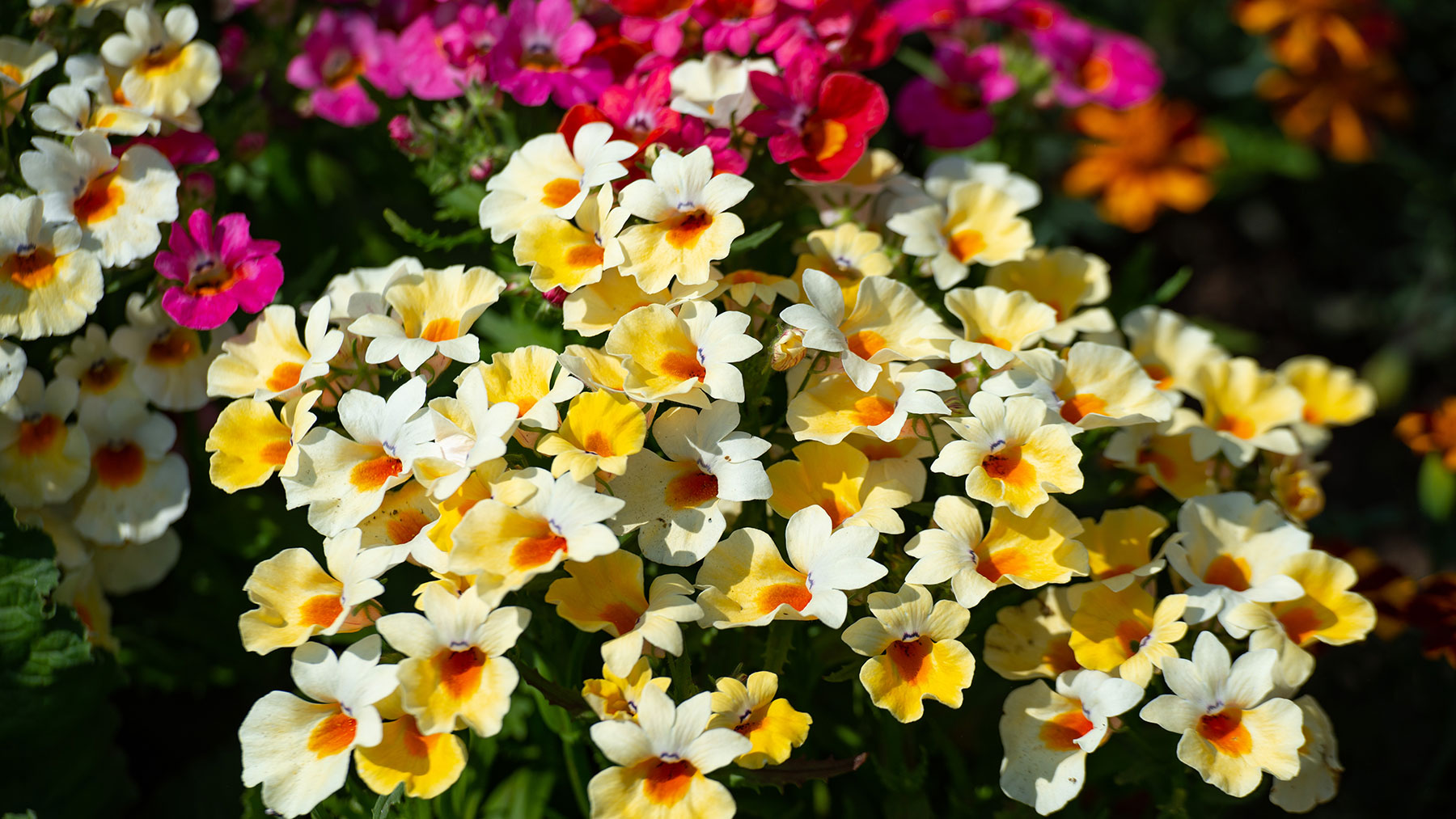
Bedding plants add a burst of seasonal color to your beds, containers, window boxes and hanging baskets. They can be annual, biennial or perennial plants, although most are annuals, and can be grown from seeds, bought as seedlings or potted specimens. So, wherever you are in your garden journey you can enjoy a flourish of bedding plants in your yard.
Apart from adding seasonal color, bedding plants can fill gaps in your borders while other plants become established. And they can ramp up the planting design of your yard each year, allowing you to experiment with different bedding plants so that your yard never looks the same.
Here we suggest 5 of the best bedding plants to plant in June to give your yard a burst of color this season, with two top suggestions from a garden expert. We've also noted which gardening zones they work best in, to give you every chance of success.
You may also be interested in 5 flowers to plant in June to brighten up your yard this summer and 5 plants to prune in June.
1. Geraniums
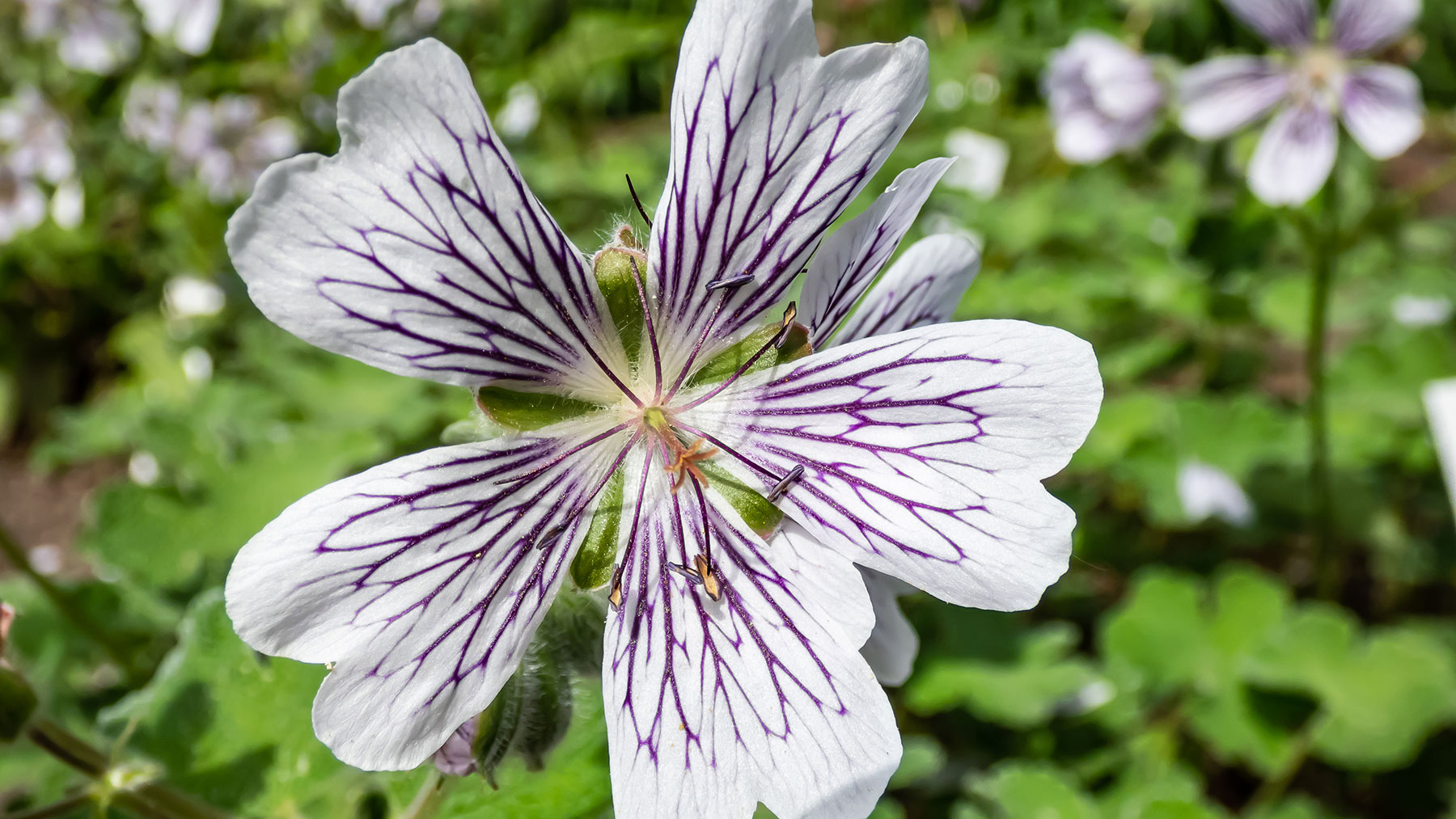
Hardy geraniums, also known as cranesbills, are one of my favorite bedding plants. I have several varieties in my yard, planted in window boxes, containers, and flower beds. They are fast-growing bedding plants that work well to fill odd spaces. What’s more, they seem to flower for eternity, making them a cost-effective plant to grow. As an added bonus, they require little maintenance.
Geraniums thrive in sunny and partially shaded areas, and do well in rich or poor soil, making them an adaptable choice. There are also plenty of geraniums to choose from in a variety of colors, but check the specified planting zone first to ensure they are suitable for your location.
Geranium Blue Sunrise ‘Blugold’ with its pinky-blue flowers will fill out the front of a flower bed or cascade over a container and will grow to 1-1.5 feet in height, with a spread between 1.5-2 feet. For something slightly more delicate, try Geranium Renardii, which has pale pinky-white flowers with violet stripes and scalloped-edged sage green leaves. It grows to 12 inches in height and prefers poor soil.
Planting Zone: 3-9
Sign up to get the BEST of Tom's Guide direct to your inbox.
Get instant access to breaking news, the hottest reviews, great deals and helpful tips.
1. Lantana
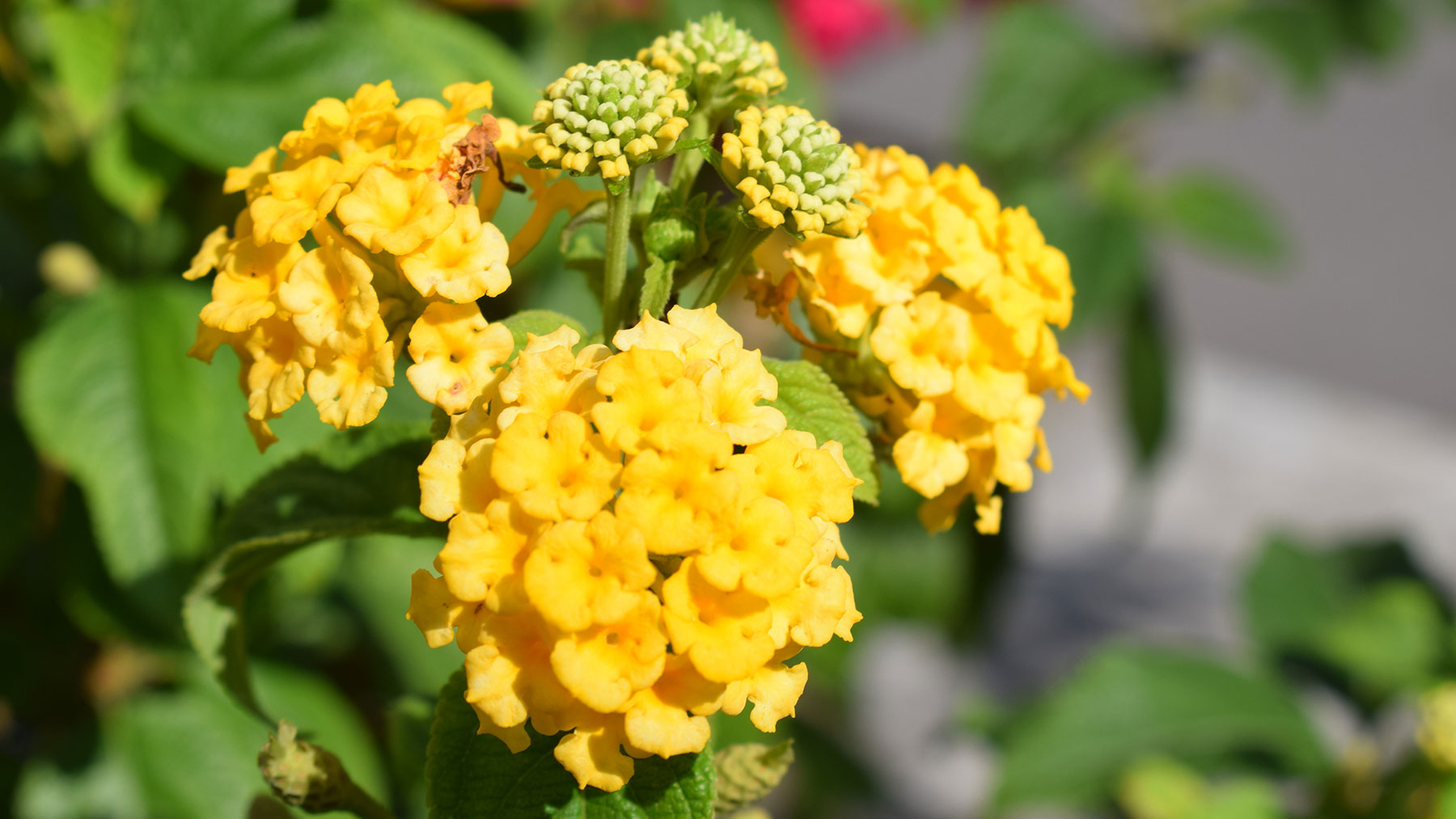
Linda Vater, author and garden designer at Southern Living Plants Collection, recommends Lantana. “It’s a fast-growing plant that can quickly fill in bare spots in your flower bed,” she says. “This is especially helpful for large beds or planting late in the season.”
She suggests Lantana camara ‘Balucgold’ for its compact growth habit, which makes it ideal for planting near the front of flower beds. It will grow 10-12 inches tall and wide. Vater says you can expect to see an abundance of bright golden-yellow flower clusters bloom from late spring until the first frost.
If you’d prefer to opt for a Lantana with a variegated bloom, you may prefer the pink and yellow mix of Lantana camara ‘Pink Caprice’, which will grow to between 1-3 feet in height and width.
Lantanas are low maintenance, although they do best with a minimum of 6-8 hours of direct sunlight a day. They are also drought tolerant once established and prefer a well-drained loose to sandy soil. If you have clay soil, Vater suggests amending it with organic matter.
Planting Zone: 10-11 (treat as a tender perennial in cooler Zones)
3. Cosmos
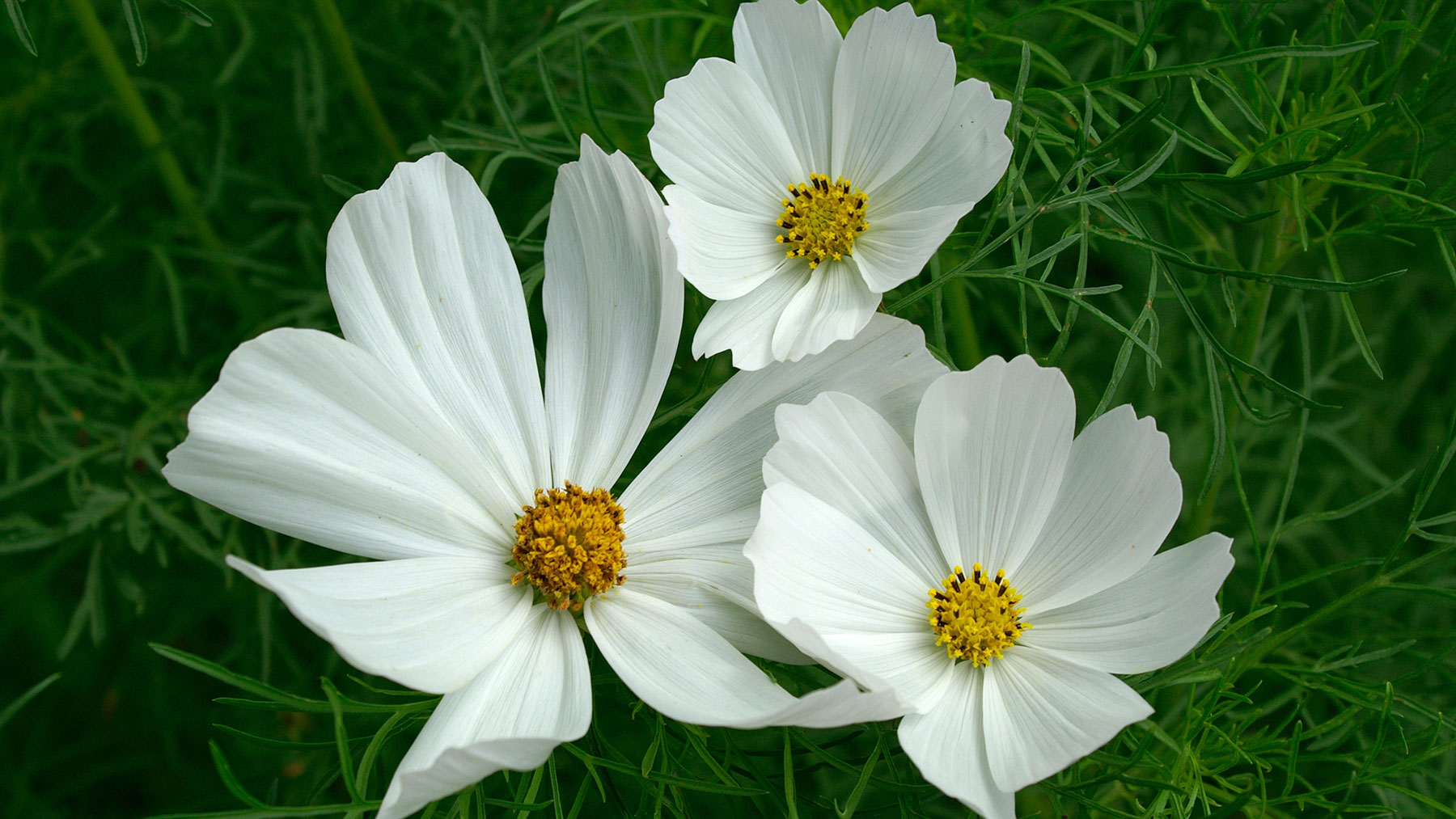
With daisy-like flowers and slender stems, Cosmos are a popular bedding plant. They are also easy to grow from seed and will withstand poor soil conditions, plus they have a long flowering season and will attract birds, bees and butterflies to your yard.
Choose from pink, red, orange, yellow, white or maroon flowers, which can be grown in beds or containers and cut to display in a vase. Cosmos bipinnatus ‘Purity’ is a classic white flower, but if you’d prefer a strong injection of color, Cosmos bipinnatus ’Sonatoa Carmine’ will add a splash of deep red.
Cosmos prefer to grow in full sun and do best in neutral to alkaline soil (pH 7.0-7.5), although they are not too fussy. The same applies to the soil; it will promote foliage over flowers if it is too rich. However, they prefer well-draining soil and should be regularly watered until they become established. Cosmos can reach up to around 5 feet depending on the variety you grow, so be sure to stake them early if you have a tall-growing variety.
Deadheading faded or dead flowers will extend the plant’s flowering life, and you’ll benefit from a new flush of blooms.
Tip
If you leave the seed head in place once the plants have finished flowering, Cosmos will self-seed, giving you more plants for next year.
Planting Zone: 2-11
4. Nemesia
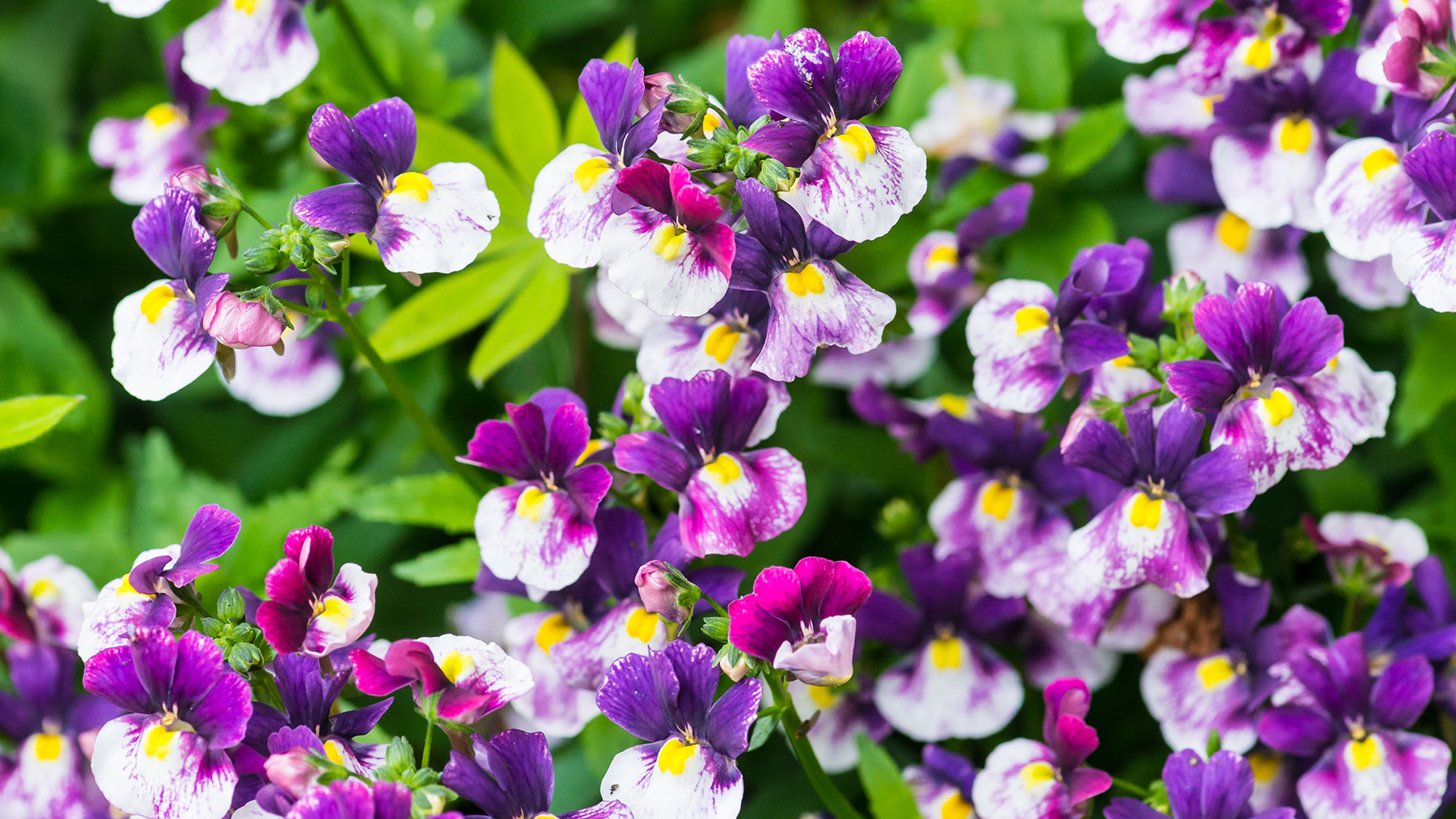
Nemesia is a pretty, compact plant with small, delicate flowers and narrow foliage. They are available in an array of colors that are either monochrome, bi-colored or multicolored, including white, cream, blue, purple, orange, yellow and pink. The small trumpet-like blooms have four upper lobes and one or two large lower lobes. Not surprisingly, nemesia belongs to the snapdragon family.
I particularly like the multi-colored blooms of Nemesia ‘Fairy Kisses Boysenberry’, which has a fragrant fruity scent. For something more unusual, you could try Nemesia's ‘Masquerade’ for its long-eared blooms.
This attractive bedding plant grows best in full sun, although it will appreciate some afternoon shade in hot climates. It also prefers nutrient-rich, moist and well-draining soil. You can expect nemesia to grow to 10 inches tall and 12 inches wide.
This bee-friendly plant is ideal if you're planning on growing a wildflower garden and it can be grown in beds, containers and hanging baskets. Once established they need little attention apart from regular watering to keep the soil moist. Growth can also be encouraged by cutting back the plant by one-third once initial flowering has finished to encourage a second flush.
Planting Zone: 9-11
Felco Pruning Shear (F 6): $54 @ Amazon
These high performing Swiss-made bypass garden pruners are constructed with forged aluminium handles and hardened steel blades. The revolving handles provides extra comfort. Ideal for pruning vines, shrubs and young trees.
5. Carex
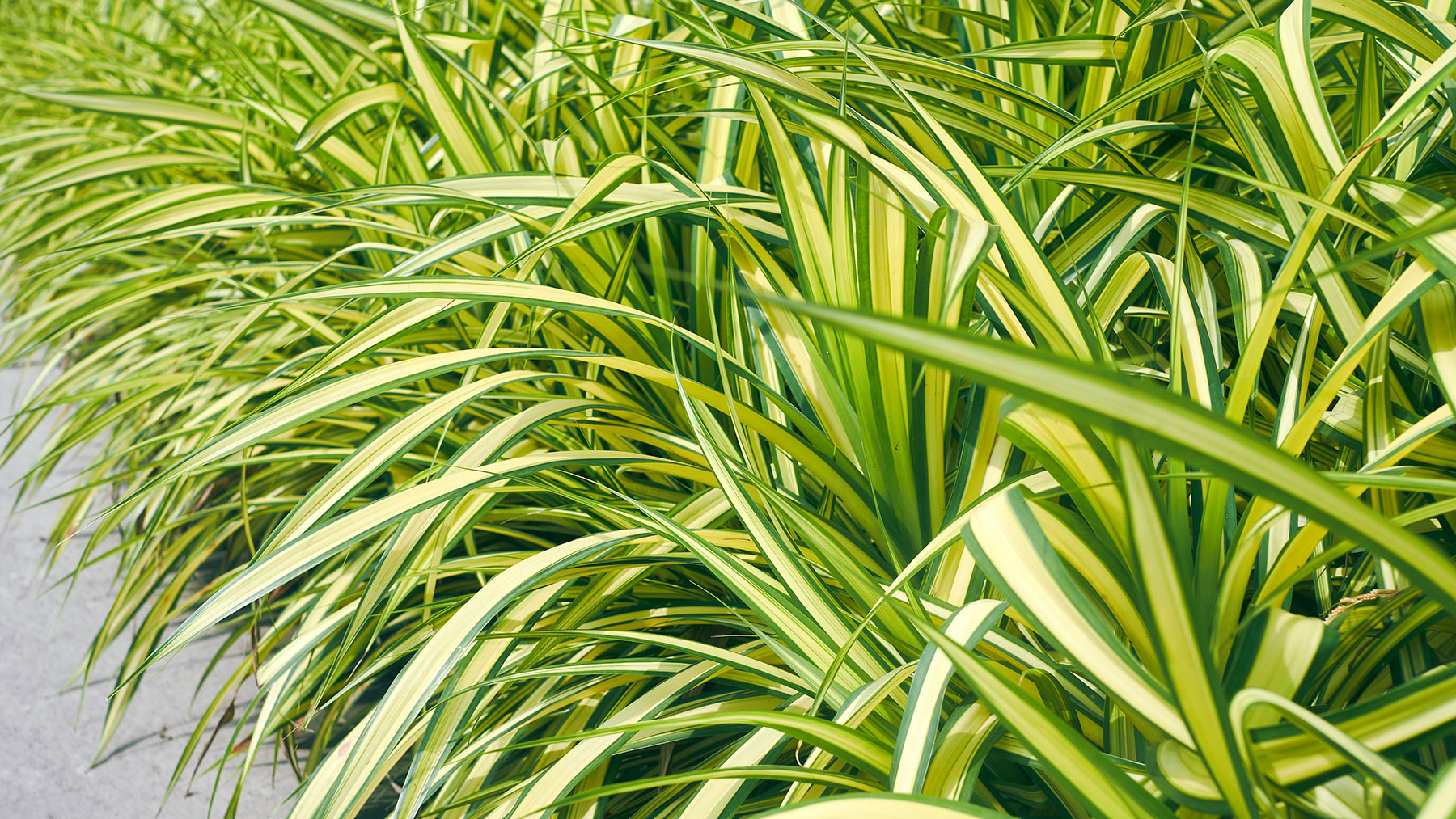
Bedding plants don’t necessarily have to produce flowers to look stunning in our yards. Grasses can create architectural interest and are striking in their own right. “Carex provides textural interest to beds with slender, grass-like leaves, adding a touch of movement and a visual dimension that differs from flowering plants,” explains Vater.
She recommends Carex oshimensis ‘Everillo’ as it “boasts soft vibrant lime green foliage that provides continuous visual interest year-round, unlike many bedding plants that flower for a limited time.”
You can put away your pruning shears when growing Carex, as it’s an easy-care plant that doesn’t require pruning. It also does best in shade or partial shade and prefers moist, well-drained, slightly acidic soil. If needed, Vater recommends amending your soil with organic matter and ensuring the top of the root ball sits at or slightly above ground level when planting.
Planting Zone: 3-9
More from Tom's Guide

Camilla Sharman has worked in publishing and marketing for over 30 years and has covered a wide range of sectors within the business and consumer industries both as a feature, content, and freelance writer.
As a business journalist, Camilla has researched articles for many different sectors from the jewellery industry to finance and tech, charities, and the arts. Whatever she’s covered, she enjoys delving deep and learning the ins and out of different topics, then conveying her research within engaging content that informs the reader. In her spare time, when she’s not in her kitchen experimenting with a new recipe, you’ll find her keeping fit at the gym. In the pool, stretching at a yoga class, or on a spin bike, exercise is her escape time. She also loves the great outdoors and if she’s not pottering about in her garden, she’ll be jumping on her bike for a gentle cycle ride.

